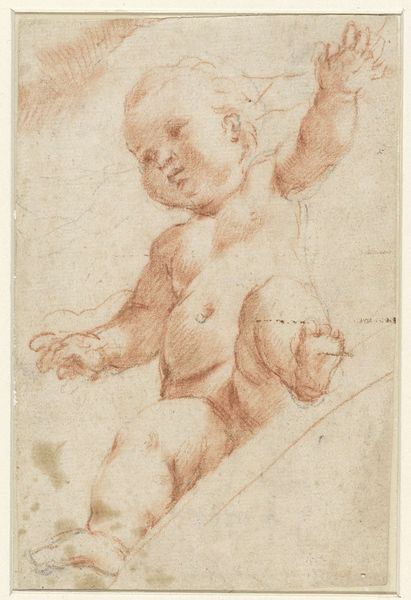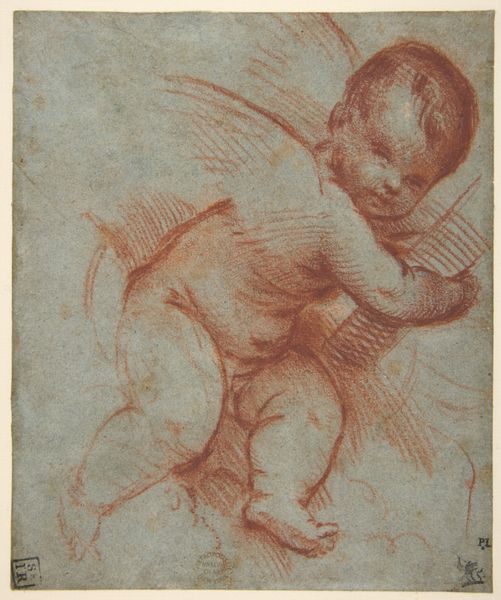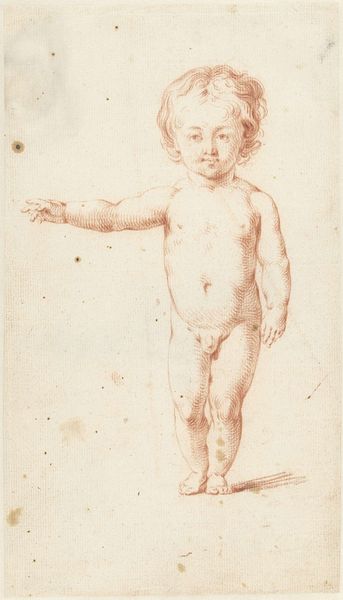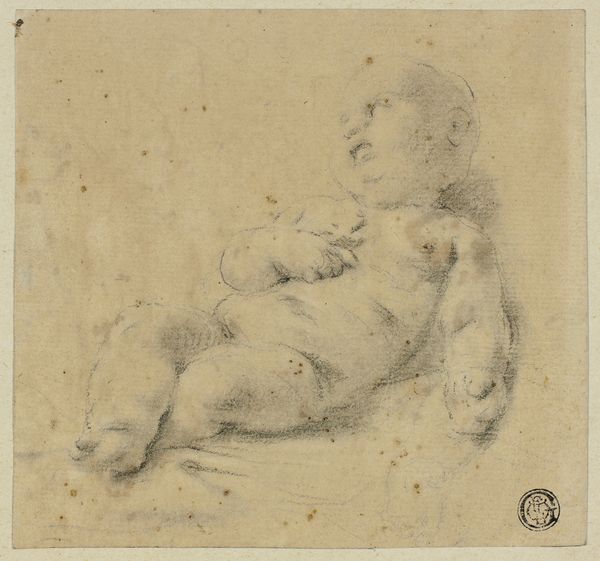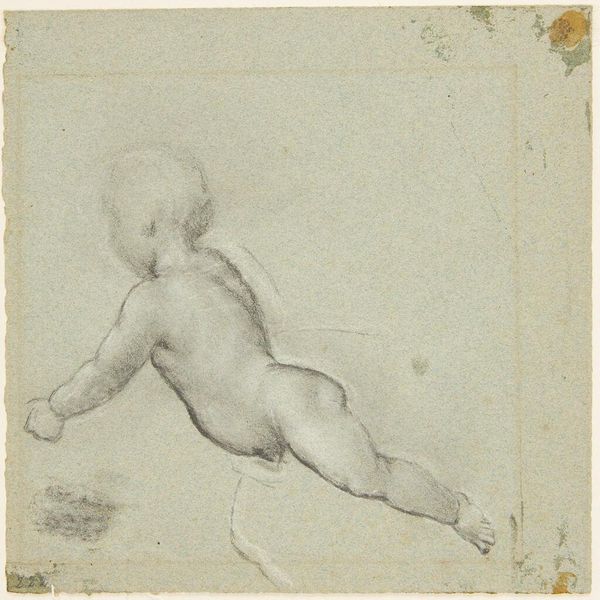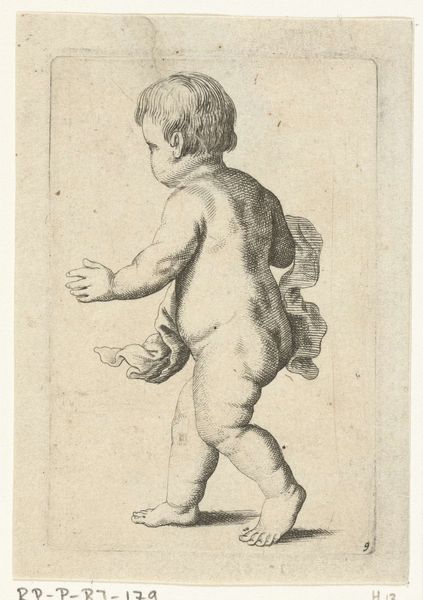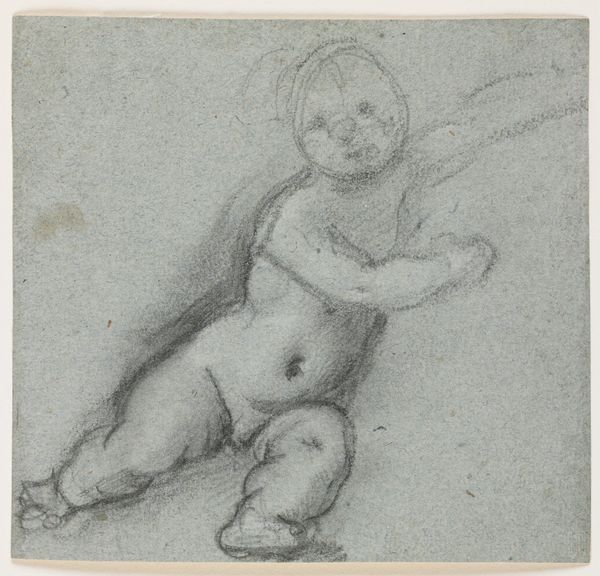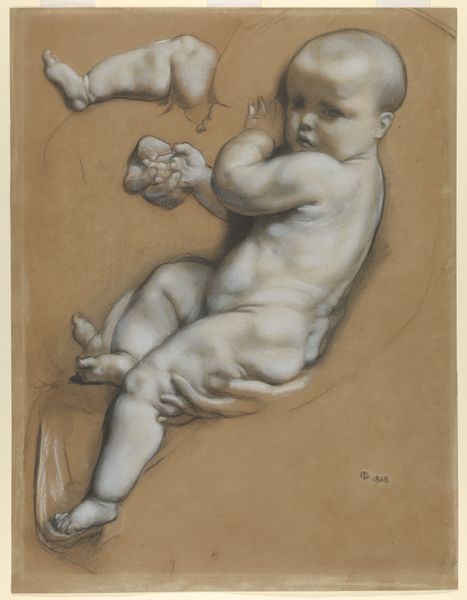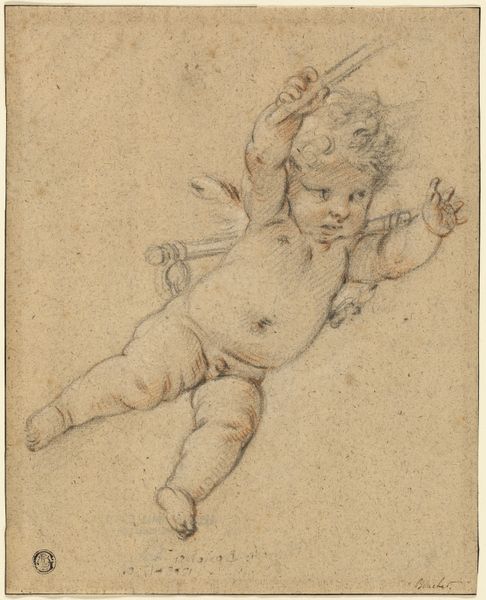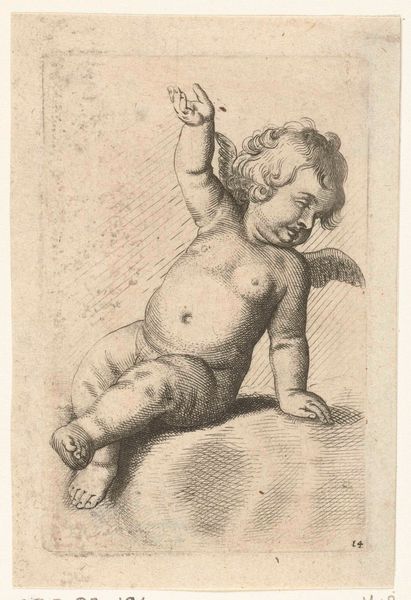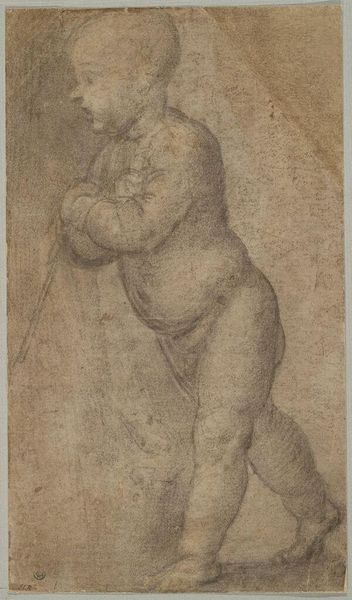
drawing, charcoal
#
drawing
#
charcoal drawing
#
mannerism
#
figuration
#
pencil drawing
#
underpainting
#
charcoal
#
nude
Dimensions: height 155 mm, width 103 mm
Copyright: Rijks Museum: Open Domain
Bartolomeo Schedoni sketched this 'Zwevende putto' in red chalk sometime between the late 16th and early 17th century. The image presents us with a floating cherubic child. In Schedoni's time, the Catholic church used art to inspire religious sentiment and to educate the masses. Figures such as this putto were common currency, representing innocence and divine love. But, Schedoni was working in a very particular environment. He was employed by the Duke of Parma, a powerful figure who was keen to establish his own artistic legacy and a sense of dynastic authority. This study allowed Schedoni to explore the potential for movement and emotion, contributing to the Duke’s overall ambitions. Art historians can research the patronage system, account books, and inventories of the period to better understand how artists negotiated the demands of powerful patrons while also expressing their own creativity. The meaning of such an image is always contingent on its complex social and institutional context.
Comments
No comments
Be the first to comment and join the conversation on the ultimate creative platform.
